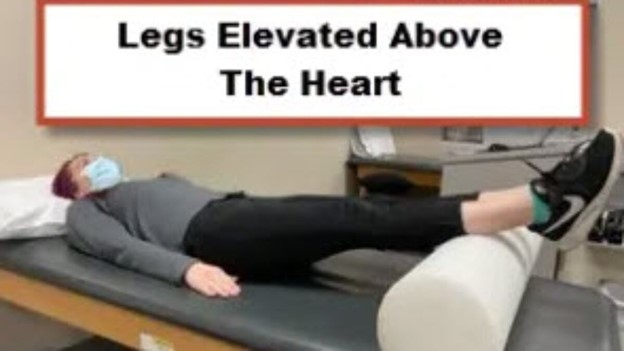A nurse is assisting with the plan of care for an adolescent who has rheumatoid arthritis and reports difficulty feeding themselves. Which of the following referrals should the nurse recommend?
Occupational therapy.
Physical therapy.
Speech therapy.
Case manager.
The Correct Answer is A
Choice A rationale:
Occupational therapy is the appropriate referral for an adolescent with rheumatoid arthritis who is having difficulty feeding themselves. Rheumatoid arthritis is a chronic autoimmune disorder that can lead to joint inflammation and deformities. Occupational therapy focuses on helping individuals improve their ability to perform daily activities, which includes activities like feeding, dressing, and grooming. Occupational therapists work with patients to develop strategies and use adaptive equipment to make these tasks more manageable. In the case of an adolescent with rheumatoid arthritis, occupational therapy can provide techniques and tools to facilitate feeding independently despite joint limitations.
Choice B rationale:
Physical therapy primarily focuses on improving mobility, strength, and function in individuals with musculoskeletal issues. While physical therapy could be beneficial for an adolescent with rheumatoid arthritis to address joint mobility and muscle strength, it might not directly address the difficulty in feeding. Therefore, although physical therapy can be a helpful component of care for patients with rheumatoid arthritis, it might not be the first choice for addressing feeding difficulties.
Choice C rationale:
Speech therapy is not the most appropriate referral for an adolescent with rheumatoid arthritis experiencing feeding difficulties. Speech therapy primarily addresses communication and swallowing disorders. While swallowing difficulties might be relevant in some cases of rheumatoid arthritis due to potential joint involvement in the jaw, the primary focus should be on addressing joint limitations and adaptive techniques for feeding, making occupational therapy a more suitable referral.
Choice D rationale:
A case manager is not the recommended referral for an adolescent with rheumatoid arthritis and feeding difficulties. Case managers typically coordinate and facilitate various aspects of a patient's care, such as arranging appointments and services. While case managers play a valuable role in healthcare, the immediate concern of feeding difficulties in an adolescent with rheumatoid arthritis is best addressed through specialized interventions like occupational therapy.
Nursing Test Bank
Naxlex Comprehensive Predictor Exams
Related Questions
Correct Answer is B
Explanation
Choice A rationale:
A 15-year-old client who requests testing for a sexually transmitted infection (STI) is seeking healthcare related to sexual health, which is often considered confidential. In many jurisdictions, minors of a certain age (often 12 or older) have the legal right to consent to STI testing and treatment without parental consent. While education on sexual health and responsible decision-making is important, in this case, the nurse may not need to involve the parent if the legal requirements are met.
Choice B rationale:
This is the correct answer. Minors generally require parental consent for medical procedures, including biopsies. A biopsy involves a medical intervention that can carry risks, and it is important to have informed parental consent for procedures on underage clients.
Choice C rationale:
A 16-year-old client who requires prenatal care for pregnancy is not applicable in this scenario. Prenatal care is focused on managing the health and well-being of a pregnant individual and their developing fetus. The question does not provide information that suggests this situation.
Choice D rationale:
A 13-year-old client who requests contraception advice may have the right to access contraception services without parental consent, depending on local laws and regulations. Many places allow minors to access contraception services confidentially, recognizing the importance of sexual health and preventing unintended pregnancies. However, it's always important for healthcare providers to assess each situation and the applicable legal framework to determine whether parental involvement is required.
Correct Answer is C
Explanation
Choice A rationale:
Encouraging active range of motion of the extremity is not recommended during the first 12 to 24 hours after a sprained wrist. Early movement can potentially worsen the swelling and delay the healing process.
Choice B rationale:
Applying warm compresses to the extremity is not the best choice to minimize swelling in the initial 12 to 24 hours after a sprained wrist. Heat can actually increase blood flow and promote more swelling in the injured area.
Choice C rationale:
Elevating the extremity above the level of the heart is the correct choice for minimizing swelling in the first 12 to 24 hours after a sprained wrist. Elevating the injured area helps to reduce blood flow to the area, which in turn decreases swelling and promotes healing.

Choice D rationale:
Wrapping the extremity loosely with an elastic bandage might be beneficial for providing support, but it's not the primary intervention for minimizing swelling in the first 12 to 24 hours after a sprained wrist. Elevation is more effective for reducing swelling during this initial period.
Whether you are a student looking to ace your exams or a practicing nurse seeking to enhance your expertise , our nursing education contents will empower you with the confidence and competence to make a difference in the lives of patients and become a respected leader in the healthcare field.
Visit Naxlex, invest in your future and unlock endless possibilities with our unparalleled nursing education contents today
Report Wrong Answer on the Current Question
Do you disagree with the answer? If yes, what is your expected answer? Explain.
Kindly be descriptive with the issue you are facing.
